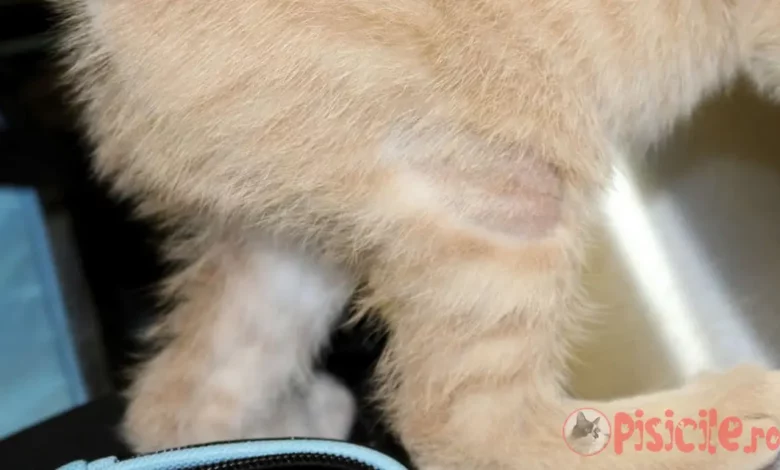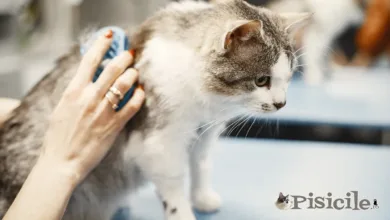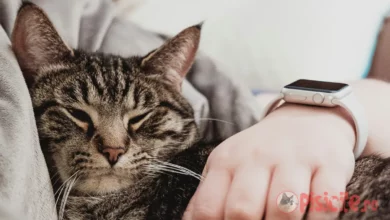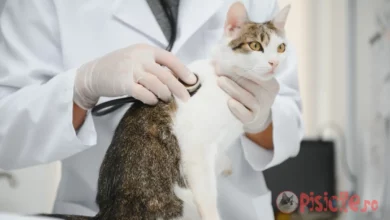
Dermatophytosis in cats is a fungal skin infection commonly found in pets. Also known as "ringworm" because of the circular appearance of the lesions, this condition is caused by microscopic fungi called dermatophytes. Among the pathogens responsible areMicrospores dog,Microsporum gypseumandTrichophyton mentagrophytes. Young cats, those with long fur or with pre-existing dermatological problems are more prone to this disease.
Subject
How does dermatophytosis work in cats?
This contagious and infectious condition affects the cat's skin, fur and claws, causing skin lesions in areas of dead tissue. Very young cats, often under one year of age, are most at risk.
If you have a cat suspected of having dermatophytosis, it is best to isolate it from other cats or pets. Dermatophytosis can be easily transmitted between animals, either directly, through contact with infected skin or fur, or indirectly, through contaminated objects such as leashes, bowls or furniture. In addition, cats can also contract the disease from fungus-carrying rodents.

The fungi responsible for dermatophytosis penetrate the cat's skin, affecting the hair follicles. This process leads to hairless areas and skin lesions. Dermatophytes feed on keratin, the protein in the surface layer of the skin and nails, aggravating the symptoms of the disease.
The incubation period of dermatophytosis can vary depending on the type of pathogen, the severity of the infection and the state of the cat's immune system. While some cases resolve within days, others may persist for weeks or even months.
The transmission of the disease is favored by environmental conditions with high humidity and high temperatures, which explains the increased incidence during the summer.
Symptoms of dermatophytosis
Clinical signs can vary, but the most common symptoms include:
- Circular areas without fur, with a scaly or irritated appearance;
- Red, ring-shaped lesions that may be accompanied by itching;
- Brittle fur that tears easily;
- Brittle and deformed nails, if the infection affects the claws;
- In severe cases, the spread of lesions over a larger area of the body.
Symptoms are easier to see in short-haired cats, while in long-haired cats the disease can go unnoticed for a while, because the fungi responsible for dermatophytosis penetrate the cat's skin and act from the base of the hair.
How is dermatophytosis treated in cats?
Fortunately, this is a disease for which there are many treatments, which your veterinarian will recommend after evaluating the cat.
Treatment of dermatophytosis in cats is very important not only for the health of the animal, but also to prevent the spread of the disease to other animals or humans, since this condition is zoonotic (that is, it can be spread from animal to human, and vice versa).
See also: Contagious diseases that cats can transmit to humans
Treatment for dermatophytosis in cats may include:
1. Antifungal drugs.
Administered orally (griseofulvin,itraconazole,terbinafine), they act against the infection from the inside. Treatment can last between 4 and 8 weeks, depending on the severity of the case.
2. Shampoos and antifungal solutions.
Regular washing with special shampoos based on chlorhexidine or miconazole helps to reduce the fungal load on the skin.
3. Maintaining a clean environment.
It is very important to disinfect the objects with which the cat comes into contact (blankets, toys, furniture) to prevent re-infection.
4. Temporary isolation of the cat.
The sick cat should be isolated from other animals until cured to limit the spread of infection.
In the management of dermatophytosis, the most important element of diagnosis is the confirmation of the presence of infection at the onset of clinical signs and the absence of infection at the end of treatment.
– Amelia G. White
Preventive measures
As with any parasitic disease, the best prevention is hygiene. Ensures proper hygiene of the cat and the home.
Periodically check the animal's health, especially if it has contact with other animals, and avoid exposing the cat to rodents or other potential sources of infection.
In conclusion, dermatophytosis in cats is a treatable disease, but requires patience and appropriate measures to prevent recurrence. Always consult a veterinarian for proper diagnosis and treatment.



